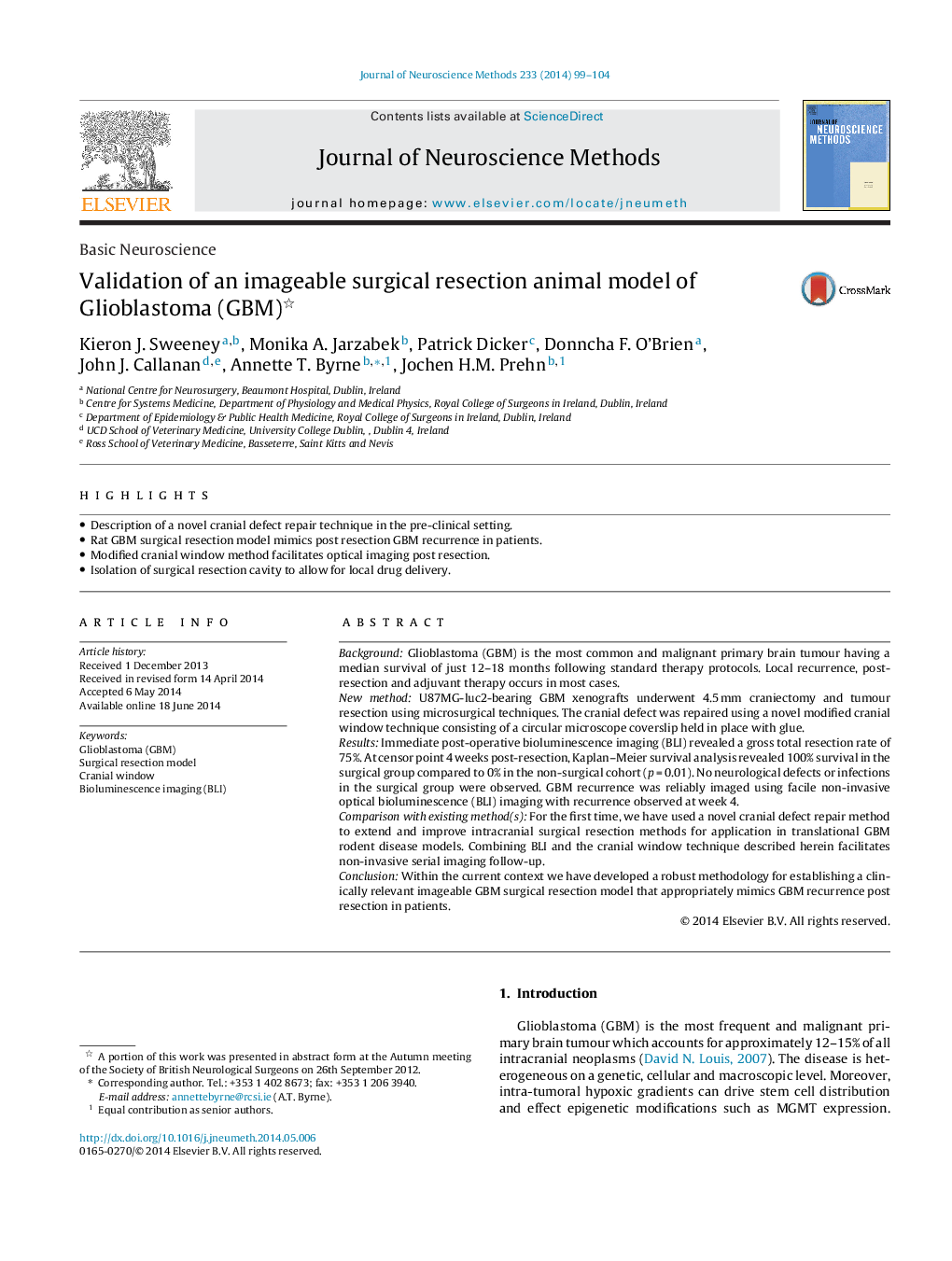| Article ID | Journal | Published Year | Pages | File Type |
|---|---|---|---|---|
| 6268488 | Journal of Neuroscience Methods | 2014 | 6 Pages |
â¢Description of a novel cranial defect repair technique in the pre-clinical setting.â¢Rat GBM surgical resection model mimics post resection GBM recurrence in patients.â¢Modified cranial window method facilitates optical imaging post resection.â¢Isolation of surgical resection cavity to allow for local drug delivery.
BackgroundGlioblastoma (GBM) is the most common and malignant primary brain tumour having a median survival of just 12-18 months following standard therapy protocols. Local recurrence, post-resection and adjuvant therapy occurs in most cases.New methodU87MG-luc2-bearing GBM xenografts underwent 4.5 mm craniectomy and tumour resection using microsurgical techniques. The cranial defect was repaired using a novel modified cranial window technique consisting of a circular microscope coverslip held in place with glue.ResultsImmediate post-operative bioluminescence imaging (BLI) revealed a gross total resection rate of 75%. At censor point 4 weeks post-resection, Kaplan-Meier survival analysis revealed 100% survival in the surgical group compared to 0% in the non-surgical cohort (p = 0.01). No neurological defects or infections in the surgical group were observed. GBM recurrence was reliably imaged using facile non-invasive optical bioluminescence (BLI) imaging with recurrence observed at week 4.Comparison with existing method(s)For the first time, we have used a novel cranial defect repair method to extend and improve intracranial surgical resection methods for application in translational GBM rodent disease models. Combining BLI and the cranial window technique described herein facilitates non-invasive serial imaging follow-up.ConclusionWithin the current context we have developed a robust methodology for establishing a clinically relevant imageable GBM surgical resection model that appropriately mimics GBM recurrence post resection in patients.
